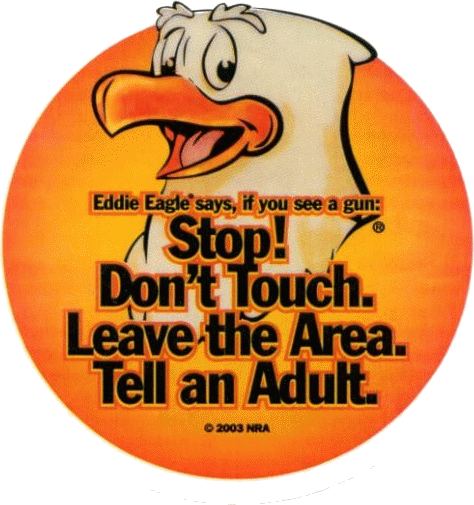That is, “Should kids play with toy guns?” This topic sometimes arises as a professional question and almost always in raising children (especially boys). It’s a widespread conundrum in the United States, where we not only have readier access to real guns than elsewhere but also spend a lot of energy critiquing our motivations and decisions.
A thoughtful article with that title by Rachel Grumman Bender was posted April 4 at Yahoo! Parenting. She poses a number of good questions, about the impact of toy guns (and attempting to forbid them) on children, whether they encourage the development of aggressive attitudes or just provide harmless ways to act out such natural impulses, and the various risks inherent in their use nowadays.
Society has changed a lot since the childhoods of aging Baby Boomers, with more politically correct rejection of guns and more concern regarding their theoretically harmful influence on tender psyches. (Their photo of a little cowboy could have been me in 1960!) In that context, there’s a striking quote in Bender’s article, from child psychiatrist Lenore Terr, highlighted at TheTruthAboutGuns.com on April 5, advocating that kids “need to shoot” others in play.
I wouldn’t go that far, but it is true that everyone has aggressive impulses and that managing them well makes civil society possible and promotes success within it. Children act out and only learn as they mature that they can control their impulses and redirect them in safer, more productive ways. Although at least 2/3 of parents may “believe that it’s never OK for a child to play with toy guns, and … forbid them in their home” it’s not possible to keep kids from seeing examples of violence in media and playing at that just like anything else. And whatever the rules in their own homes, kids will play with toy weapons (guns, swords, light-sabers, etc.) at friends’ homes and at some point will encounter real firearms.
After some thought, and learning more about child development from my own children than I ever imagined from my formal psychiatry training, I came to my own conclusions. My wife and I don’t buy toy guns for our kids and discourage them as gifts. She doesn’t shoot and I think it’s wiser to define guns as real adult appurtenances than as toys. But people sometimes give them anyway. And there’s no avoiding their repurposing any number of household items (pens, cardboard tubes, anything with a hand grip, and of course simply fingers) into that moment’s pretend weapon of choice. Some children enjoy the idea of using different items that they can disguise as guns as it brings them a sense of excitement. Adults could decide to buy their child a Nerf gun, which is similar to a real one, but it doesn’t have any real bullets. This could be the perfect example of gifts for 8 year old boys as they can feel what it’s like to play with a real gun, without anyone actually getting hurt. Playing with these types of toys is something that all kids like to do at this age. It is part of their pretend play which can be attributed to part of their childhood development, not to mention what they are exposed to during their childhood. For example, a child hearing a catchy song on their favorite Youtube channels are more likely to repeat it and imitate the possible behavior seen within those videos.
As someone comfortable using guns but aware of their dangers, I decided that I’d take these occasions to teach basic lessons of gun safety. Just as they’re not to hit, bite, kick, scratch or bite others, they’re never to point anything they’re pretending to be a gun at anyone. They’re only to aim at imaginary bad guys. And by and large, that’s what happens (in fact, more consistently than the no hitting, biting, kicking, etc. expectations). This also leads into what to do if they happen to encounter a gun. It’s a simplified form of NRA’s Eddie Eagle mantra: “Don’t touch it!-Go tell an adult.” We even hear our 9 year old elder instructing our 4 year old on this (as on many things). When they demonstrate the maturity to be trusted shooting with me, they’ll already have and can build on these habits.
You may appreciate Bender’s review for the variety of opinions shared. I’m obviously not convinced by the notion of just not aiming at other people’s faces. Air and paintball guns aren’t toys for little ones, and most injuries from them, like from real firearms, would be avoided with proper instruction and supervision. Legislation requiring that toy gun barrels be tipped with orange has been pointless, as real guns have had muzzles painted orange and toy guns’ orange tips have been blackened, stupidities resulting in deaths. Child psychologist Michael Thompson is exaggerating to say that “Everyone has [a] theory that playing with guns leads to the use of guns in adulthood”. But he’s exactly right that “there’s no scientific evidence suggesting that playing war games [or with toy guns] in childhood leads to real-life aggression.” Psychologist Helen Boehm, who admittedly doesn’t like toy guns, hits the bull’s-eye: “[C]hildren don’t learn values from toy guns …[P]arents and other role models … have the most important influence on a child’s behavior.”
I agree. What do you think?
Join us on our Facebook page to discuss this topic.

– DRGO editor Robert B. Young, MD is a psychiatrist practicing in Pittsford, NY, an associate clinical professor at the University of Rochester School of Medicine, and a Distinguished Life Fellow of the American Psychiatric Association..


